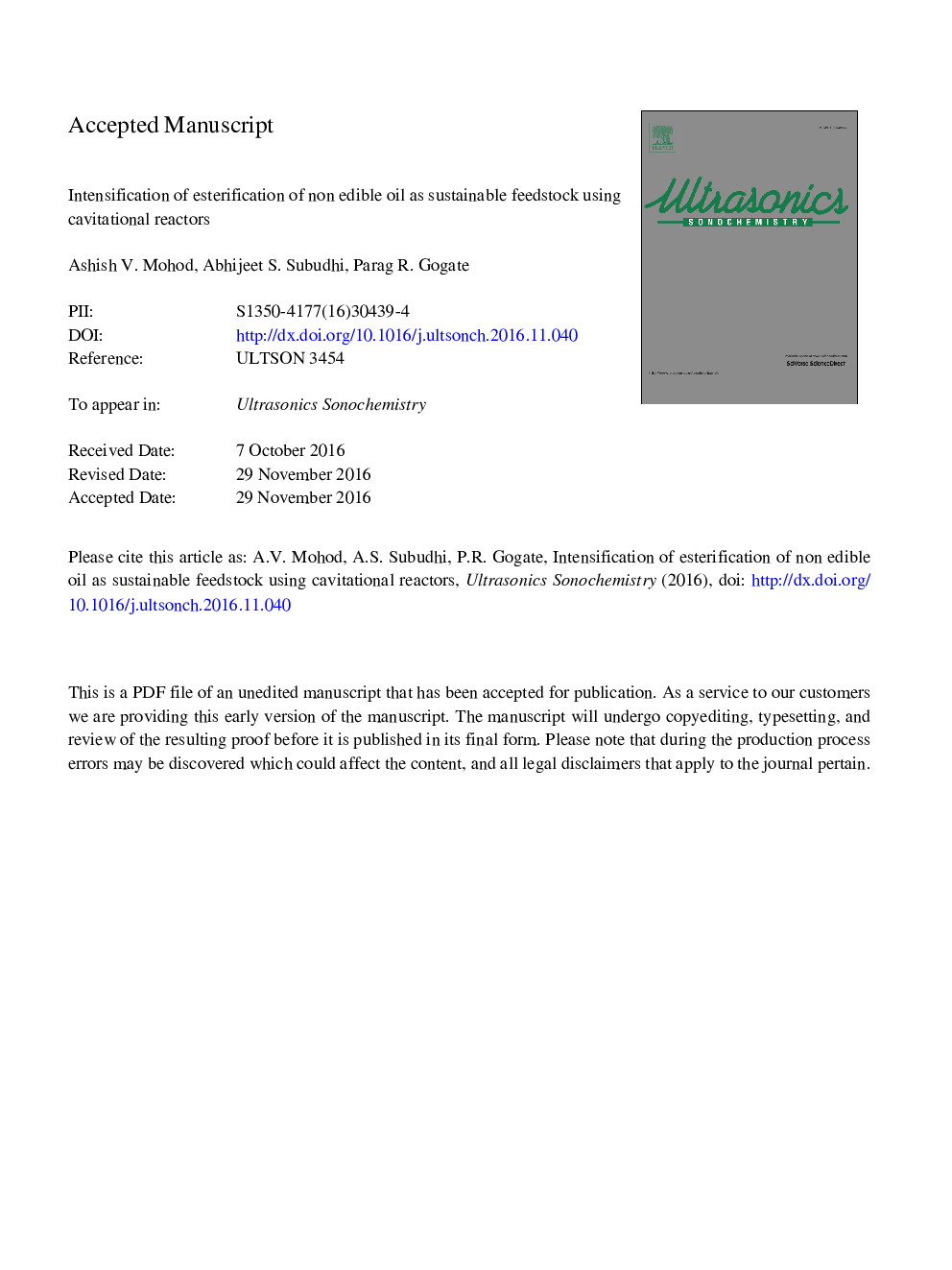| کد مقاله | کد نشریه | سال انتشار | مقاله انگلیسی | نسخه تمام متن |
|---|---|---|---|---|
| 5144750 | 1496869 | 2017 | 44 صفحه PDF | دانلود رایگان |
عنوان انگلیسی مقاله ISI
Intensification of esterification of non edible oil as sustainable feedstock using cavitational reactors
دانلود مقاله + سفارش ترجمه
دانلود مقاله ISI انگلیسی
رایگان برای ایرانیان
کلمات کلیدی
موضوعات مرتبط
مهندسی و علوم پایه
شیمی
شیمی (عمومی)
پیش نمایش صفحه اول مقاله

چکیده انگلیسی
Using sustainable feed stock such as non-edible oil for the biodiesel production can be one of the cost effective approaches considering the ever growing interest towards renewable energy and problems in existing approaches for production. However, due to the high free fatty acid content, non-edible oils require considerable preprocessing before the actual transesterification reaction for biodiesel production. The present work focuses on intensification of the esterification reaction used as preprocessing step based on acoustic and hydrodynamic cavitation also presenting the comparison with the conventional approach. Karanja oil with initial acid value as 14.15Â mg of KOH/g of oil has been used as a sustainable feedstock. Effect of operating parameters such as molar ratio, catalyst loading, temperature and type of catalyst (sulfuric acid and Amberlyst-15) on the acid value reduction has been investigated. The maximum reduction in the acid value (final acid value as 2.7Â mg of KOH/g of oil) was obtained using acoustic cavitation at optimum molar ratio of oil to methanol as 1:5 and 2% sulfuric acid loading at ambient temperature. In the case of hydrodynamic cavitation, acid value reduced upto 4.2Â mg of KOH under optimized conditions of first stage processing. In the second stage esterification using hydrodynamic cavitation and conventional approach, the final acid value was 3.6 and 3.8Â mg of KOH/g of oil respectively. Energy requirement analysis for ultrasound and conventional approaches clearly established the superiority of the ultrasound based approach. The present study clearly demonstrated that significant intensification benefits can be obtained in terms of the reduction in the molar ratio and operating temperature for the case of acoustic cavitation as compared to the conventional approach with somewhat lower effects for the hydrodynamic cavitation.
ناشر
Database: Elsevier - ScienceDirect (ساینس دایرکت)
Journal: Ultrasonics Sonochemistry - Volume 36, May 2017, Pages 309-318
Journal: Ultrasonics Sonochemistry - Volume 36, May 2017, Pages 309-318
نویسندگان
Ashish V. Mohod, Abhijeet S. Subudhi, Parag R. Gogate,